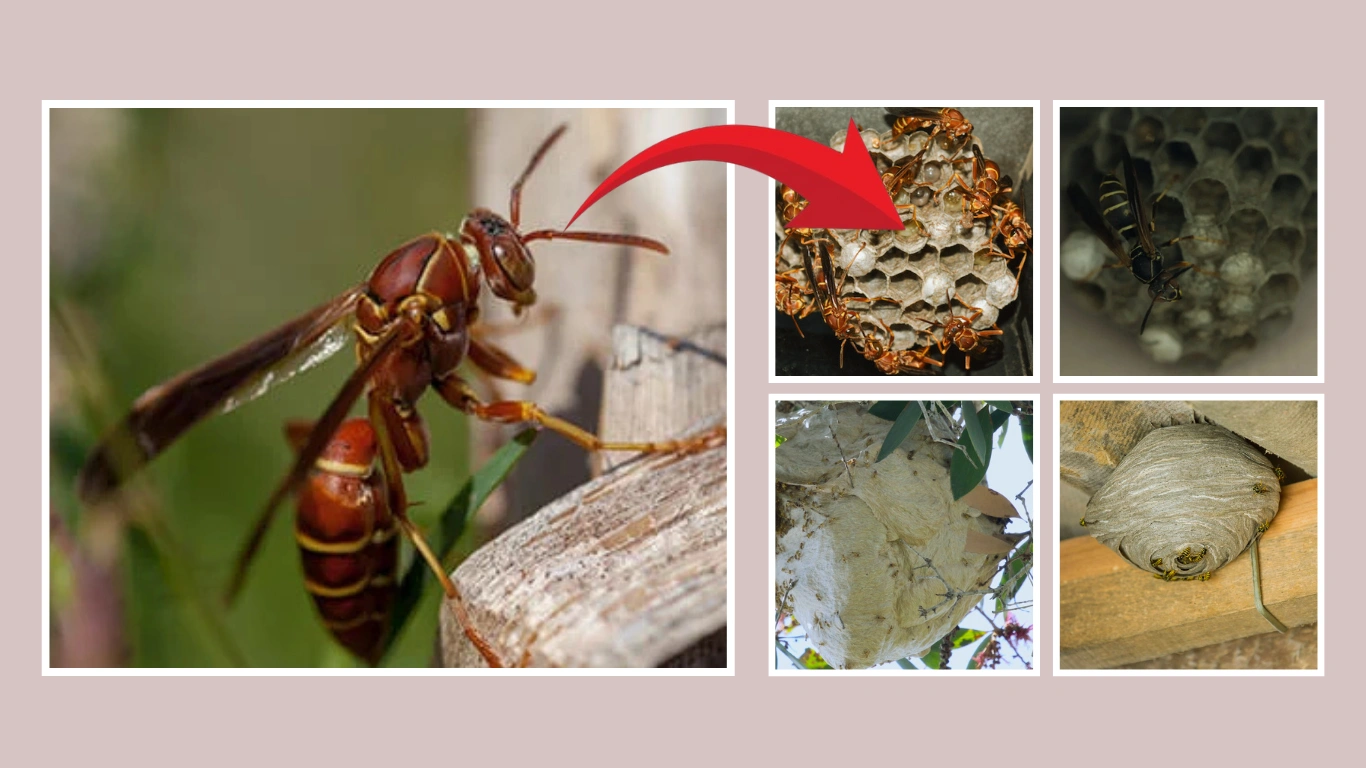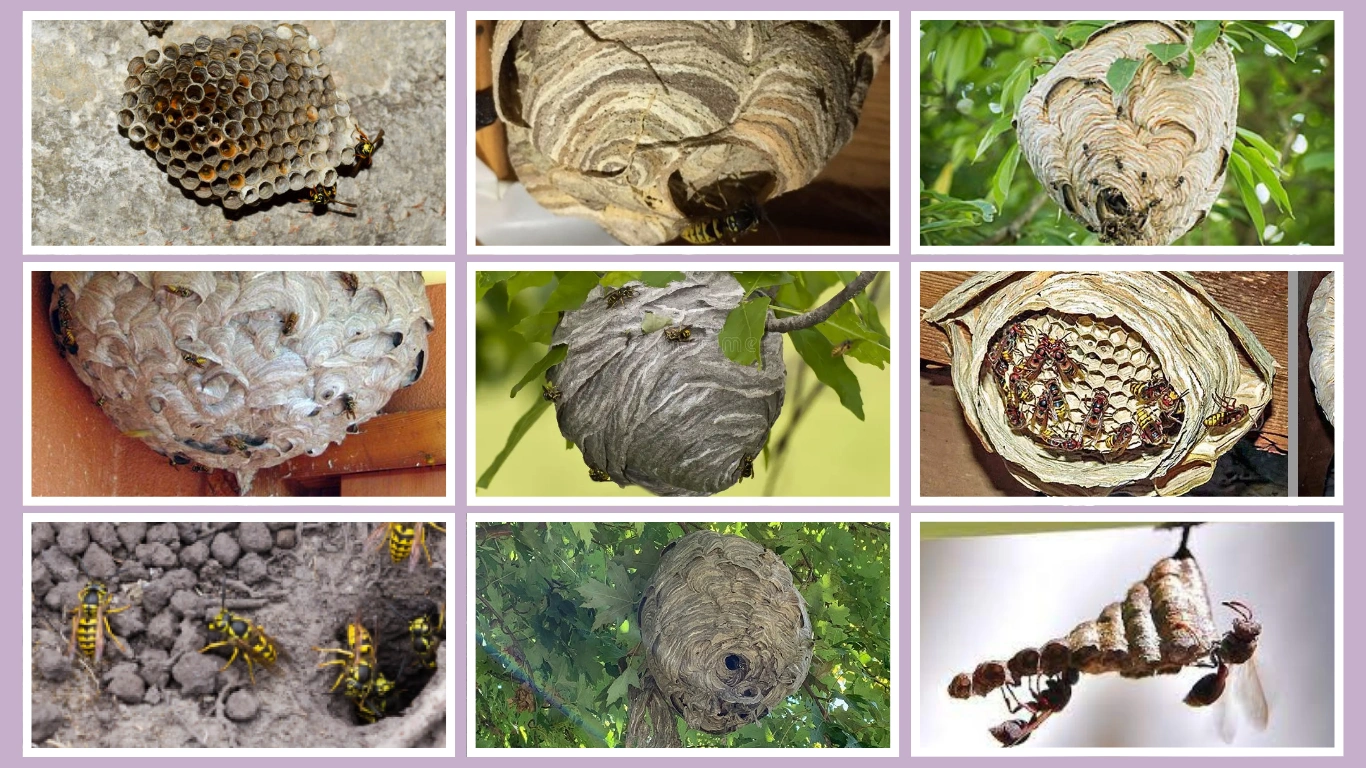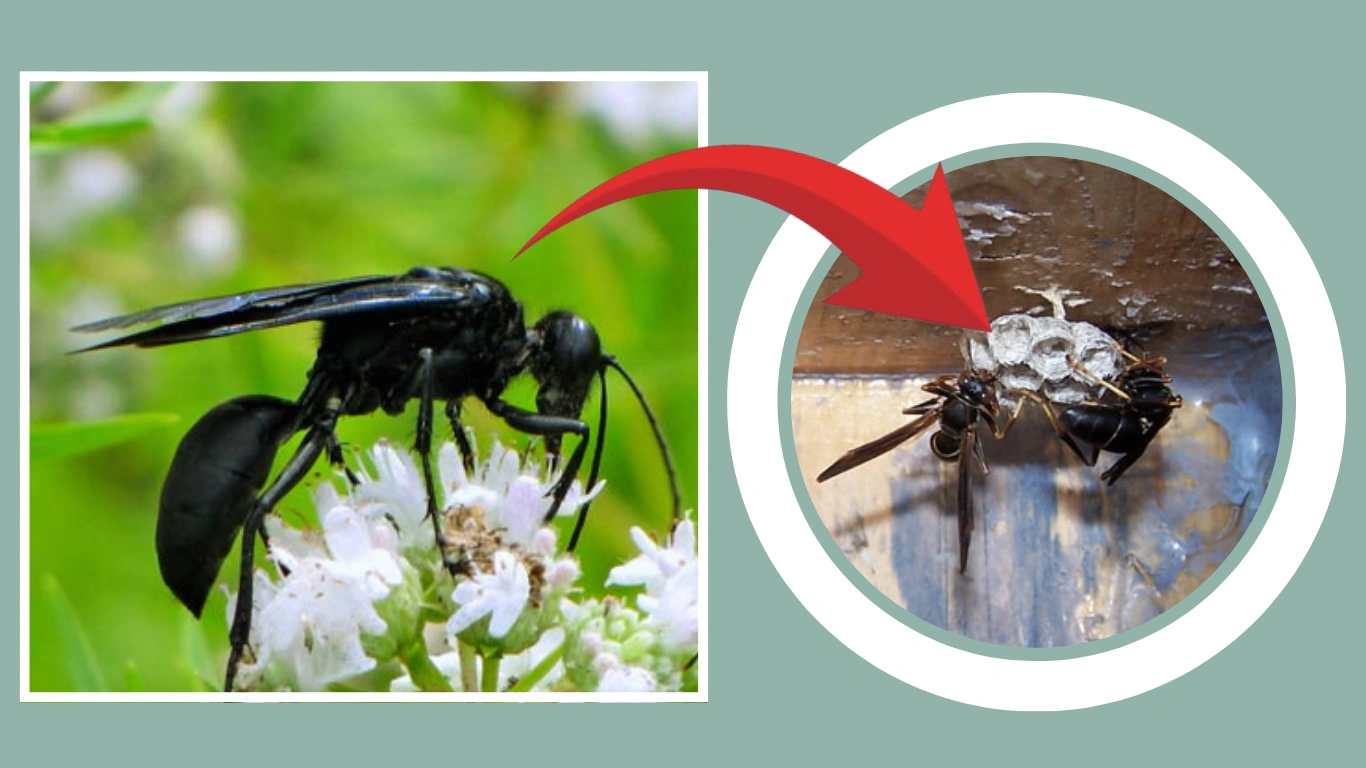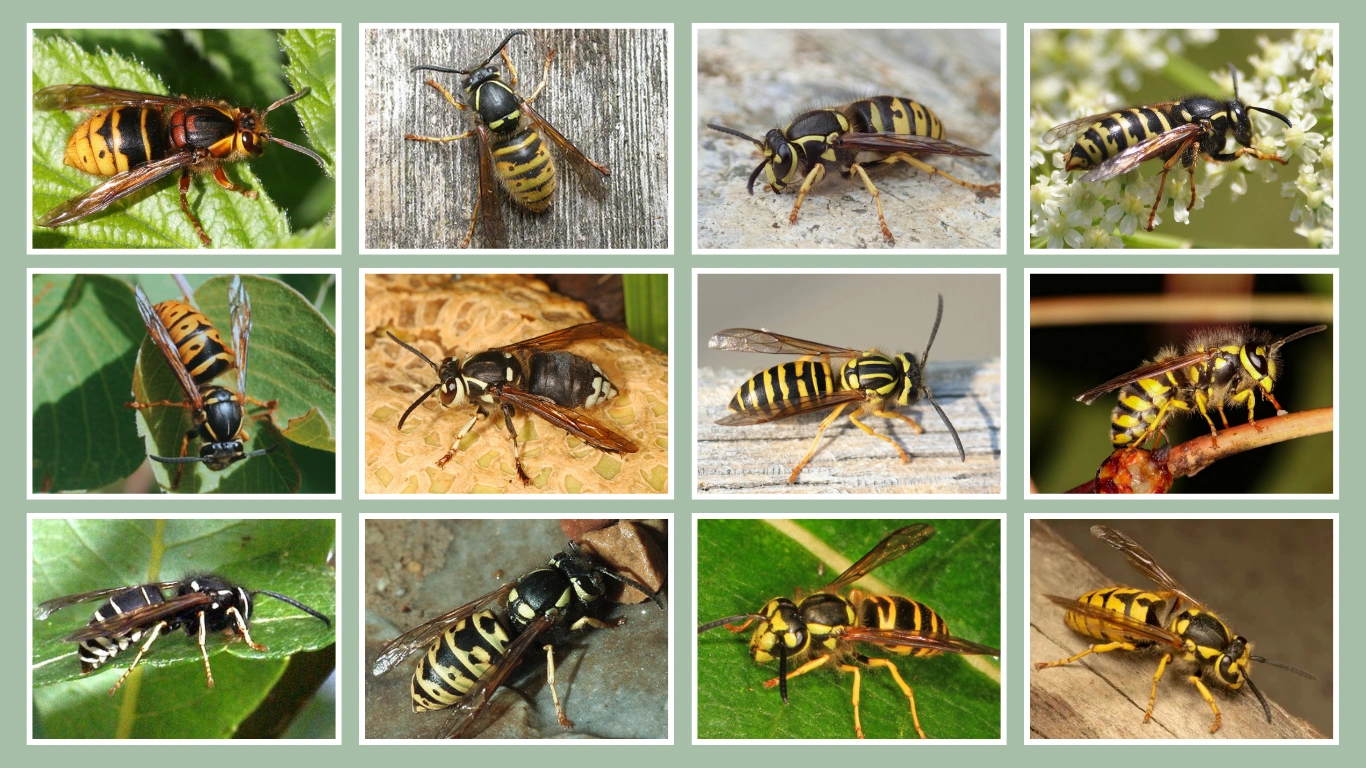If you’ve ever noticed a strange, papery clump under your roof, stuck to a fence, or hidden in a tree branch, you might’ve come face to face with a paper wasp nest. I’ve come across quite a few of these in different places—and trust me, they can be both fascinating and frustrating. These nests are carefully built by wasps using chewed-up wood fibers, and they come in all shapes, sizes, and colors. In this guide, I’ll break down what these nests look like, where you’ll usually find them, how to identify the different types, and what to do if one shows up near your home. Whether you’re just curious or trying to figure out how to get rid of one, I’ll walk you through everything step by step.
What is a Paper Wasp Nest?
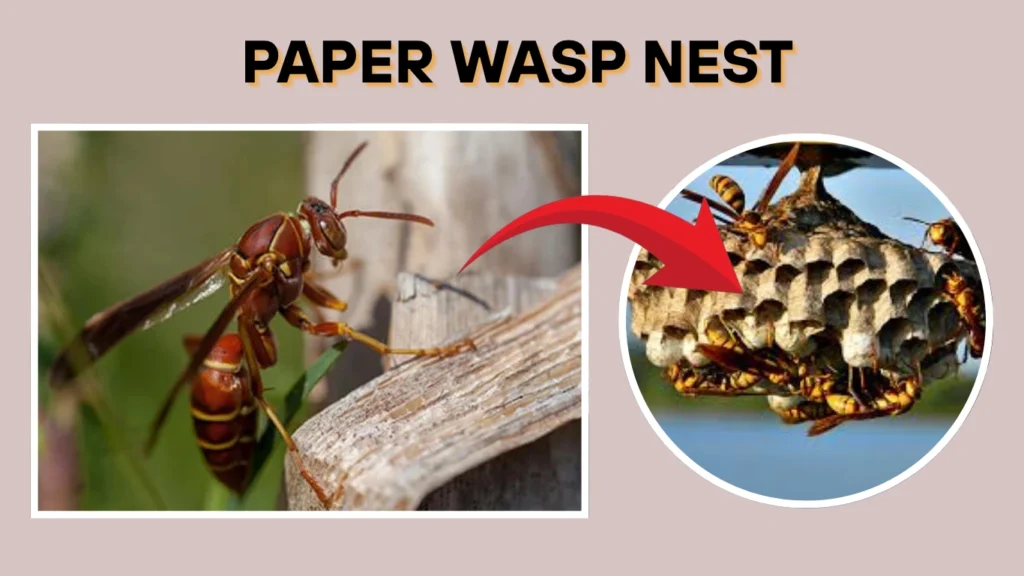
Paper wasp nests are some of the most recognizable structures in the insect world. They’re made from a grayish paper-like material, which the wasps create by chewing up wood and mixing it with their saliva. The result is a lightweight, papery substance that they shape into open, umbrella-like combs filled with hexagonal cells.
From my experience, these nests can show up in the most unexpected places—under eaves, inside sheds, or hanging from tree branches. Unlike hornets or yellow jackets, paper wasps don’t fully enclose their nests, so you can usually see the exposed cells and wasps crawling over them.
What Is It Made Of?
The “paper” isn’t actually paper, of course—it’s made from bits of weathered wood, bark, and plant stems the wasps chew into a pulp. They use this mixture to build and repair the nest throughout the season.
What Does the Nest Look Like?
A paper wasp nest often looks like a small, gray paper fan or umbrella hanging upside down. It can start small (like the size of a ping pong ball) but grow into something as wide as a dinner plate if the colony thrives.
How Long Does a Nest Last?
Most paper wasp nests last only for one season. When winter hits, the colony dies off, and only the fertilized queens survive by finding shelter elsewhere. The old nest is never reused by the same wasps.
When Do Wasps Build Nests?
Paper wasps usually start building in spring when the weather warms up. By mid to late summer, their nests can become quite active and sizable. That’s why it’s best to keep an eye out early in the season.
Paper Wasp Nest Identification
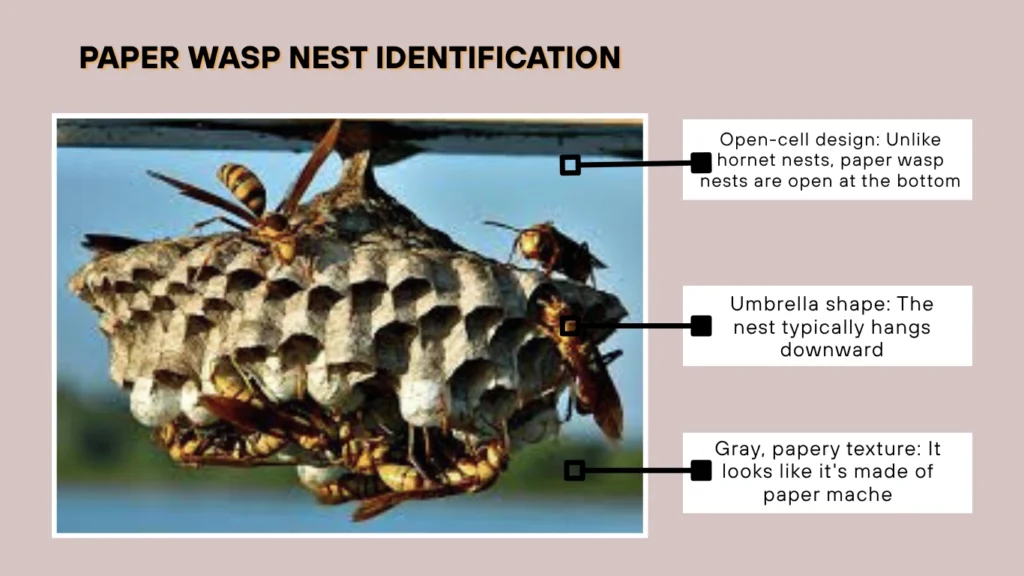
Identifying a paper wasp nest isn’t too hard once you know what to look for. Over the years, I’ve spotted them in all kinds of places, and there are a few details that always give them away.
Key Features to Look For
- Open-cell design: Unlike hornet nests, paper wasp nests are open at the bottom, and you can usually see the individual cells where they raise their young.
- Umbrella shape: The nest typically hangs downward and resembles an upside-down umbrella or fan.
- Gray, papery texture: It looks like it’s made of paper mache—thin layers of grayish material that peel and flake if touched.
Size and Growth
Nests often start small—about the size of a walnut—but can grow rapidly in summer. A fully mature nest might be the size of a softball or even larger. I’ve seen some nests with hundreds of wasps crawling on them, especially later in the season.
Inside the Nest
If you ever get a safe look inside (or find an abandoned one), you’ll notice the cells arranged in perfect hexagons. These hold the wasp larvae, and you might even see white caps on some of them where pupae are developing.
Early Stage vs. Mature Nest
In the early stage, the nest might only have a handful of cells and a single queen. As weeks pass, worker wasps hatch and expand the nest quickly. If you spot a small one early in spring, you’re in a good position to deal with it before things escalate.
Colors and Types of Paper Wasp Nests
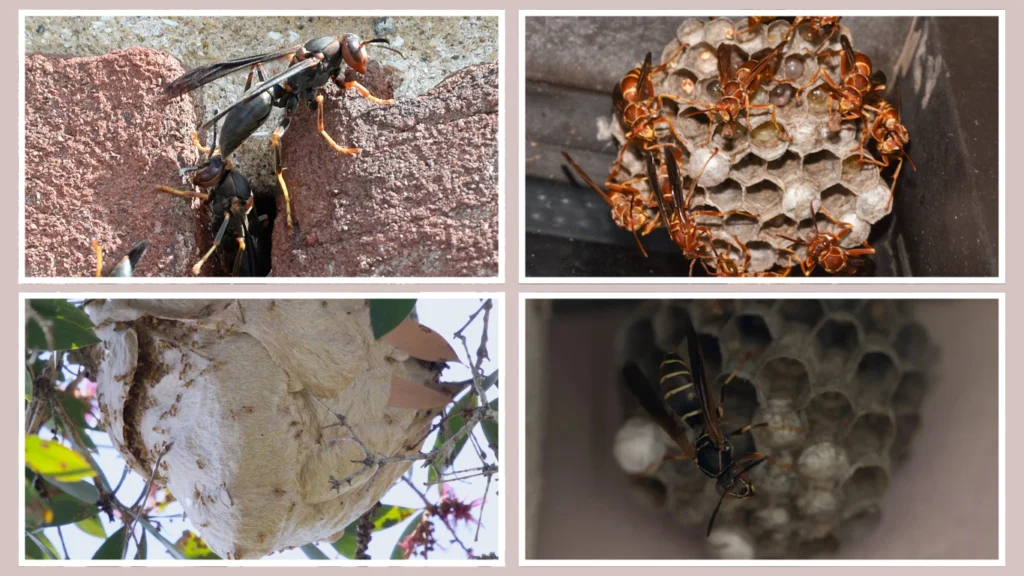
While most paper wasp nests look gray from a distance, I’ve seen several with hints of other colors—and these differences can sometimes help you identify the wasp species or the materials they’ve used.
Different Nest Colors
- Black paper wasp nest: Usually darker due to weathered wood or soot in the environment.
- Red paper wasp nest: Rare, but sometimes red fibers from nearby plants or wood give the nest a reddish tone.
- Yellow or brown paper wasp nest: Can appear when wasps use dry, yellowish plant material or old fence wood.
- Dark paper wasp nest: Typically found in shaded, moist environments where discoloration occurs over time.
By Species or Region
- European paper wasp nest: More compact and sometimes hidden in small crevices. The wasps are slightly smaller and very active.
- Northern paper wasp nest: Built higher up in trees or structures, often bigger and more exposed.
- Australian native paper wasp nest: Tends to be longer and layered. Some species create vertical combs rather than horizontal ones.
- Guinea paper wasp nest: Found in tropical regions, often blending well with natural surroundings.
Nest Locations and Seasonal Behavior

Paper wasps are smart about where they build their homes. I’ve found their nests in places I never expected—from the back of a garden chair to high up in tree branches.
Common Nesting Spots
- Paper wasp nest in tree: Very common. Often found hanging from a thin branch or nestled in thick leaves.
- Paper wasp nest in wall: They may crawl into cracks or under siding to build inside the wall cavity—hard to spot and remove.
- Paper wasp nest in ground: Rare, but some species adapt if shelter is tight. Usually seen in old rodent burrows or among garden debris.
- Paper wasp nest inside homes: Attics, vents, and crawl spaces can all be cozy spots for them.
- Paper wasp nest in winter: While active nests die off by late fall, you might still find an old nest hanging through winter. Wasps don’t reuse old nests, but queens will overwinter nearby and build fresh ones in spring.
If you’re in a warm climate, you might even see nesting activity stretch into early winter. Always keep an eye out around porches, sheds, and attic vents—those seem to be paper wasp favorites.
Paper Wasp Nest Construction Behavior
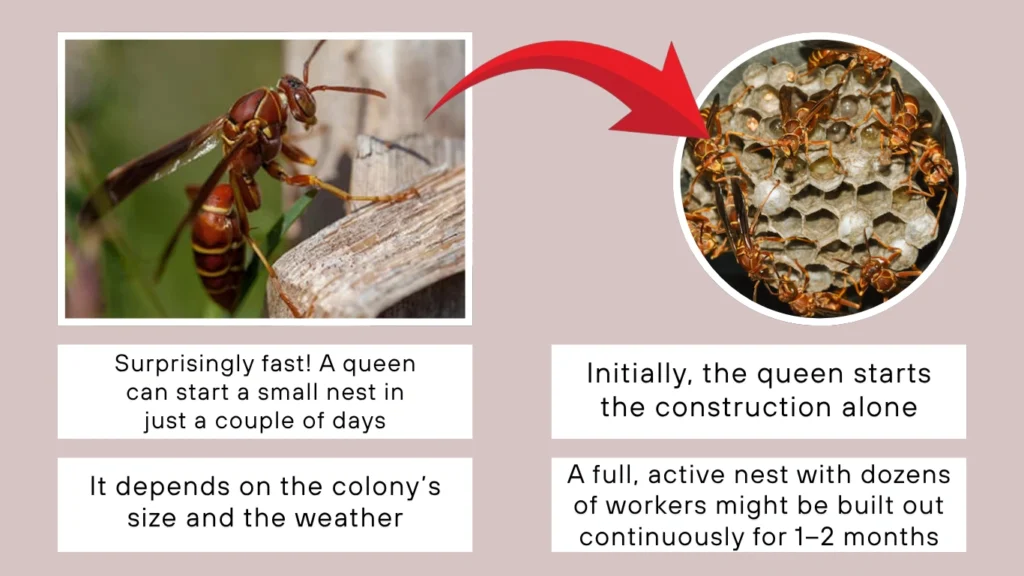
Watching a paper wasp build a nest is actually pretty impressive. I’ve spent time observing a few build-outs in my yard, and it’s amazing how quickly and efficiently they work.
How Do They Build the Nest?
Paper wasps chew up weathered wood, bark, or even old cardboard, mix it with their saliva, and create a pulpy material. They then use this to sculpt the nest layer by layer, starting with a stem (called a petiole) and adding hexagonal cells one by one.
How Fast Can They Build a Nest?
Surprisingly fast! A queen can start a small nest in just a couple of days. Once the first workers hatch, the construction speeds up, and within a few weeks, the nest can double or triple in size. On warm, sunny days, I’ve seen visible growth overnight.
How Long Does It Take to Finish a Nest?
It depends on the colony’s size and the weather. A small starter nest might take a week. A full, active nest with dozens of workers might be built out continuously for 1–2 months, with constant expansion as the colony grows.
Who Does the Building?
Initially, the queen starts the construction alone. After her first brood matures, worker wasps take over the job. They expand the nest, maintain it, and even repair damage after rain or disturbance.
Small and Large Nest Types
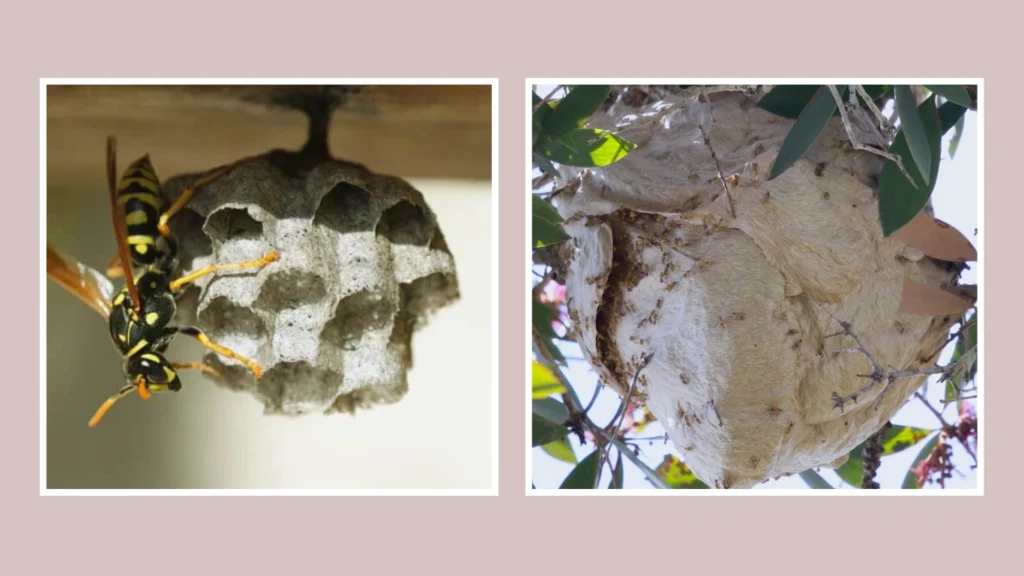
Not all paper wasp nests are big. In fact, the size can tell you a lot about how advanced the colony is—or if you’ve caught it early.
Small Paper Wasp Nest
In spring, nests usually start off small—about the size of a golf ball. You might only see a few cells and one or two wasps hanging around. These are often easy to remove safely if caught early. I’ve removed a few of these myself with minimal trouble before they had the chance to grow.
Large and Giant Paper Wasp Nests
By late summer, a paper wasp nest can reach the size of a melon or larger. These can contain dozens or even hundreds of wasps. Large nests are usually found in undisturbed areas, like under decks, high eaves, or quiet sheds.
How Big Can a Paper Wasp Nest Get?
Most nests stay under 12 inches in diameter, but I’ve seen some pushing closer to 16 inches wide, especially if the season is long and warm. These larger nests are much riskier to approach and should be handled with caution—or professionally removed.
Paper Wasp Nest vs Other Wasp and Hornet Nests
It’s easy to confuse different types of wasp nests, especially if you’re not used to spotting them. I’ve had neighbors think they had paper wasps when it turned out to be hornets—and that can make a big difference in how you handle the situation.
Paper Wasp Nest vs Hornet Nest
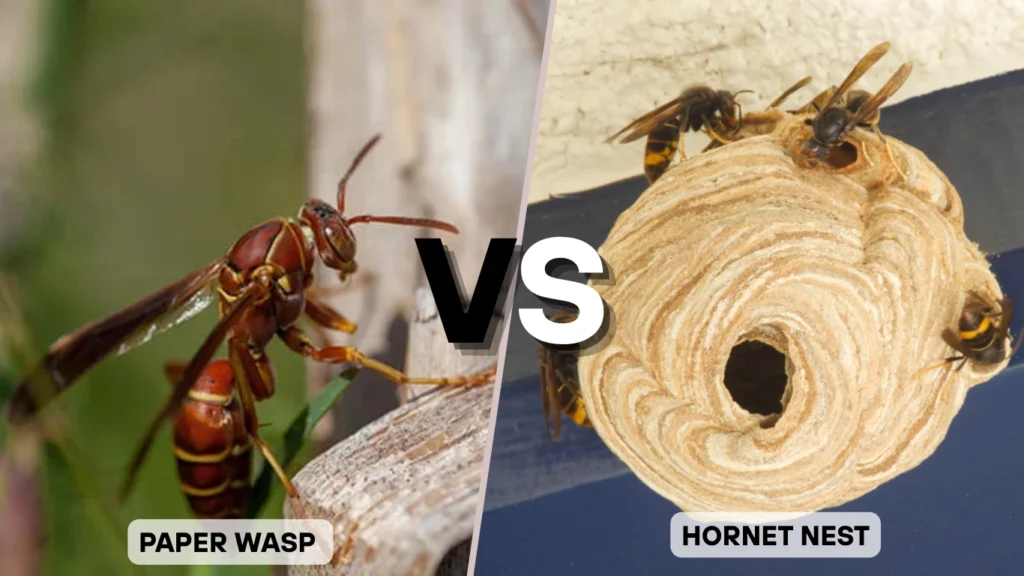
Paper wasp nests are open and usually umbrella-shaped. You’ll see the cells exposed at the bottom.
Hornet nests, like those built by bald-faced hornets, are enclosed in a thick papery shell and shaped more like a football. They often hang higher in trees or eaves and look bulky.
Paper Wasp vs Yellow Jacket Nest

Yellow jackets often build their nests underground or inside walls. If you’re seeing wasps going in and out of a hole in the ground or your siding but don’t see a visible nest—it’s probably yellow jackets. Their nests are usually hidden, unlike the exposed structure of paper wasp nests.
Structural and Behavioral Differences
- Paper wasp nest: Open cells, visible structure, gentle curve, moderate aggression.
- Hornet nest: Fully enclosed, thick, aggressive defenders.
- Yellow jacket nest: Hidden, often below ground, highly aggressive and dangerous to disturb.
Nest Removal: General Instructions

Removing a paper wasp nest can be done safely—if you’re careful, patient, and pick the right time. I’ve handled a few on my own, especially smaller ones early in the season, and here’s what I’ve learned.
When to Remove a Nest
- Best time of day: Early morning or late evening when the wasps are less active and mostly inside the nest.
- Best time of year: Early spring is ideal. The nest is small, and there’s usually just a queen and a few workers.
- Avoid trying to remove large nests in summer without help—it’s risky.
Step-by-Step Basics
- Wear protective clothing: Cover as much skin as possible—gloves, long sleeves, goggles, and a hood if you have one.
- Use a wasp spray: Pick one that shoots from a distance (10+ feet) and contains a fast-acting insecticide.
- Spray at night or early morning: Soak the nest and surrounding area thoroughly.
- Wait 24 hours: Check for any remaining activity before removing the nest.
- Remove the nest: Once inactive, knock it down with a stick or broom handle and dispose of it in a sealed bag.
Safety Tips
- Never shine a flashlight directly on the nest—use indirect lighting.
- Have an escape plan ready, especially if the nest is large or in a tight space.
- If you’re allergic to stings, don’t attempt this—call a professional immediately.
Nest Preservation and Collection
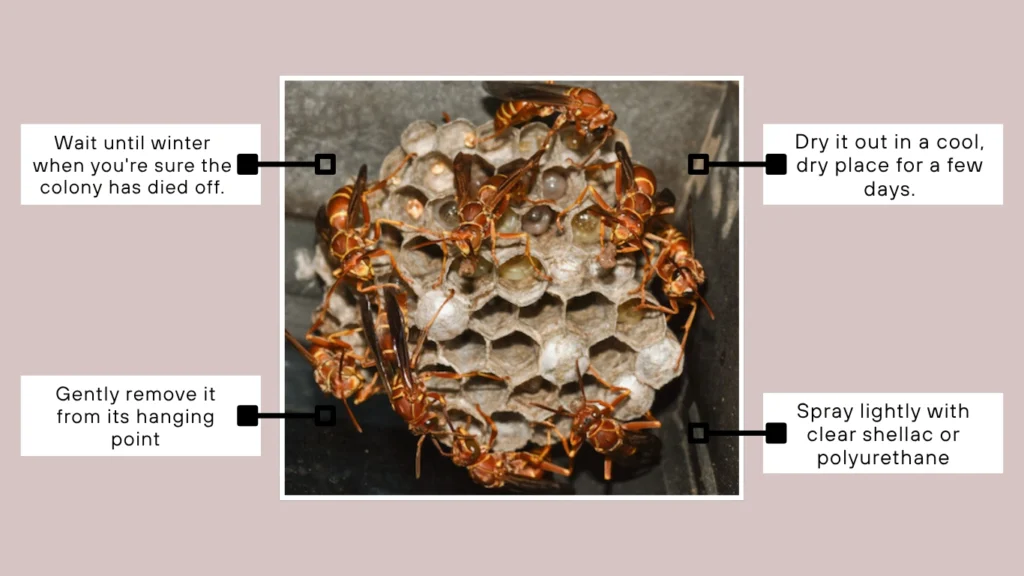
Not everyone wants to destroy a wasp nest—some people, like myself, have preserved them for display, study, or even photography. If you’ve found an abandoned nest and it’s intact, preserving it can be a fascinating way to take a closer look at nature’s architecture.
How to Preserve a Paper Wasp Nest
If the nest is empty (no live wasps, larvae, or eggs), here’s how you can keep it:
- Wait until winter when you’re sure the colony has died off.
- Gently remove it from its hanging point—support it from underneath to avoid cracking the papery shell.
- Dry it out in a cool, dry place for a few days.
- Spray lightly with clear shellac or polyurethane (optional) to strengthen and protect it from crumbling.
Best Time to Collect
Late fall or early winter is the safest. If you collect a nest in summer, it’s risky—wasps may still be inside.
Preservation Tips
- Avoid moisture—nests will mold or collapse.
- Don’t store in a sealed plastic bag unless it’s fully dry.
- Keep out of direct sunlight to preserve color.
Deterrents and Long-Term Prevention
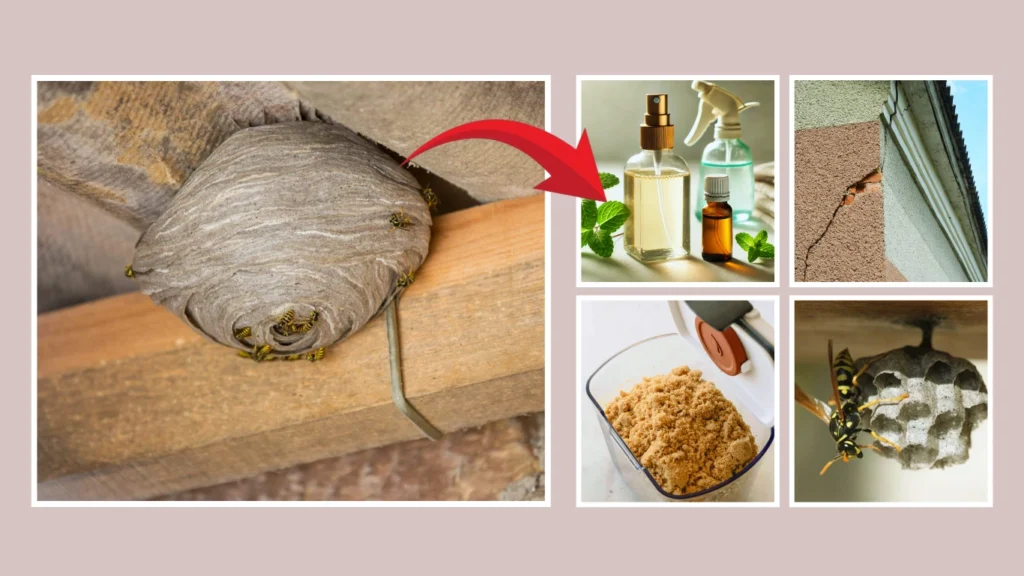
It’s always easier to prevent a nest than to remove one—especially once a colony is active. I’ve learned this the hard way and now take early spring prevention seriously.
Paper Wasp Nest Deterrents
- Fake nests: Wasps are territorial and usually won’t build within 20 feet of another nest.
- Essential oils: Peppermint oil mixed with water (and a bit of dish soap) makes a decent natural spray deterrent.
- Seal entry points: Caulk cracks around windows, doors, and rooflines.
- Keep food covered: Sugary drinks and open garbage attract wasps looking to feed.
When to Start Preventing
Start placing deterrents and checking your property in early spring (March–April). This is when queens begin scouting for nesting spots.
Other Helpful Measures
- Regularly check under eaves, deck railings, and patio furniture.
- Knock down small starter nests as soon as you spot them.
- Use yellow lightbulbs for outdoor lighting—wasps are less attracted to them.
FAQs
1. What does a paper wasp nest look like?
A paper wasp nest looks like an upside-down umbrella made of gray paper. It has open hexagonal cells where the wasps raise their young, and you can usually see the wasps crawling around it during the day. Some nests may appear darker or have reddish or brownish tints depending on the materials used.
2. How can I safely remove a paper wasp nest?
The safest way is to spray the nest with a wasp insecticide at night or early morning when they’re less active. Wear protective clothing and stay at a distance. Once there’s no movement for 24 hours, remove the nest and dispose of it in a sealed bag. For large or hard-to-reach nests, it’s best to call a professional.
3. Are paper wasps aggressive?
Paper wasps aren’t as aggressive as yellow jackets or hornets, but they will sting if they feel threatened—especially if you get too close to their nest. They’re more defensive in late summer when the colony is larger.
4. What’s the difference between a hornet nest and a paper wasp nest?
A paper wasp nest is open and umbrella-shaped, with visible cells. A hornet nest is fully enclosed in a round, papery shell and often much larger. Hornets are also more aggressive. If you can’t see the inside of the nest, it’s likely not a paper wasp nest.
5. Can I preserve a paper wasp nest?
Yes! If it’s abandoned, you can gently remove it, let it dry, and optionally spray it with a clear coat to strengthen it. Many people keep preserved nests for educational or decorative purposes. Just make sure it’s completely inactive before handling.
